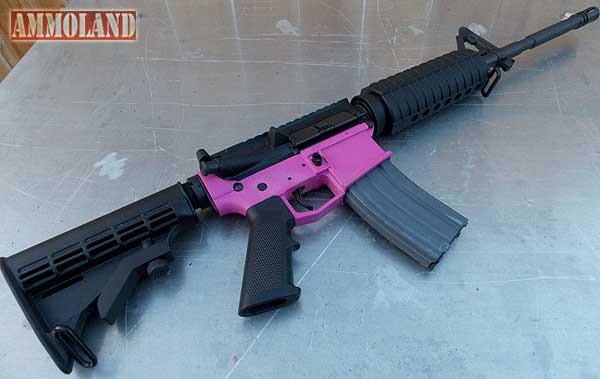

U.S.A. –-(Ammoland.com)- Since the end of the assault weapons ban in 2004 the rifle world has grown significantly. America’s most popular rifle, the AR 15 has evolved and adapted to countless different variants.
The popularity of 80% lowers has created an entirely new market for builders. These days you can find AR 15 lowers made of different aluminum, polymer, and somebody even built a receiver from wood. The wood lower receiver is not for sale, so polymer and Aluminum tend to rule the 80% world.
The Showdown
Aluminum receivers have been built almost entirely from aluminum since the first AR 10 was built by Eugene Stoner and Armalite. Aluminum ar-15 receivers have proven themselves through decades of war to be reliable and capable.
Polymer lowers are relatively new, and have gotten attention in the 80% world for their claims of being easier to build. Polymer has come a long way in the last few decades, with most modern handguns being composed primarily of polymer. The big question is can polymer replace aluminum on AR-15s?
Durability
How does plastic compete with metal in terms of durability? Certainly, rifles like the FN SCAR series and their polymer lowers work. However, the AR-15 is not a SCAR. One of the primary differences is the buffer assembly. This is where polymer lowers tend to be weaker in nature. The torque applied to the buffer tube and castle nut can stress and break a polymer AR-15 receivers. There are plenty examples of this happening.
In terms of shooting durability, there is not noticeable difference because there isn’t much stress on the lower when firing. For police and military applications where the rifle could fall, or be bumped hard, metal tends to be the more durable material.
Comparing most 80% polymer and metal AR-15 receivers you’ll notice a major difference in the reinforcement, especially around where the safety is installed. The metal receiver is often more reinforced is this area.

Reliability
The lower receiver’s job is the hold the lower components in place and allow them to function. Both lower AR-15 receivers will use the same parts and both have proven capable of making a firing weapon. Polymer lowers will often require the addition of anti-walking pins in the fire control group. There is a greater chance that these pins will walk themselves out of a polymer lower.
Compatibility
Almost all accessories for the AR 15 are made with metal receivers in mind. Polymer lowers have to attempt to match the dimensions of a metal receiver. Most of the time they do it right. However, there have been numerous issues with polymer lowers and magazine well tolerances. This can create tolerance differences with different magazines. The mag wells can be too tight, or too loose. Aluminum receiver don’t have compatibility issues because the parts are made for them.
Price
Polymer lowers tend to be slightly cheaper. The cost between an 80% aluminum ar-15 receivers and a polymer ar-15 receivers is on average around ten bucks. The parts and tools to mill and create a polymer lower are basically the same as an aluminum receiver.
Final notes
Polymer lowers could very well be the future of AR lowers. At this point though, polymer lowers are still untested and are still working out the kinks. I like the idea; especially how light you can build a rifle with a polymer lower. Right now, they simply aren’t where they need to be, and aluminum AR lower receivers are the better choice for AR builders.
About AR-15 Lowers
AR-15 Lower Receivers is a seller of quality Mil Spec AR-15 80% lower ar-15 receivers and 80% lower jigs and uses high quality materials to ensure superior strength and dependability. Visit : www.ar-15lowerreceivers.com
